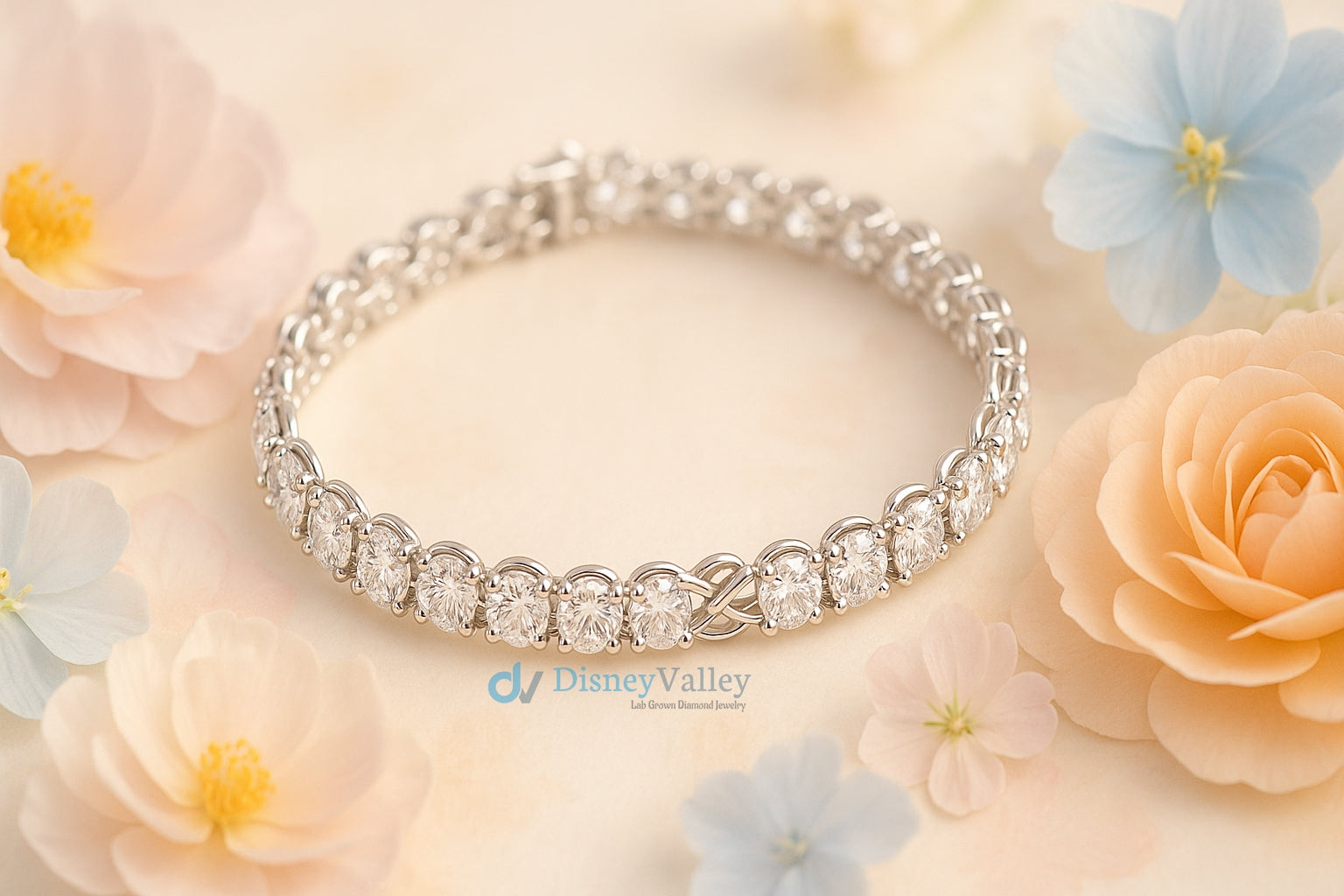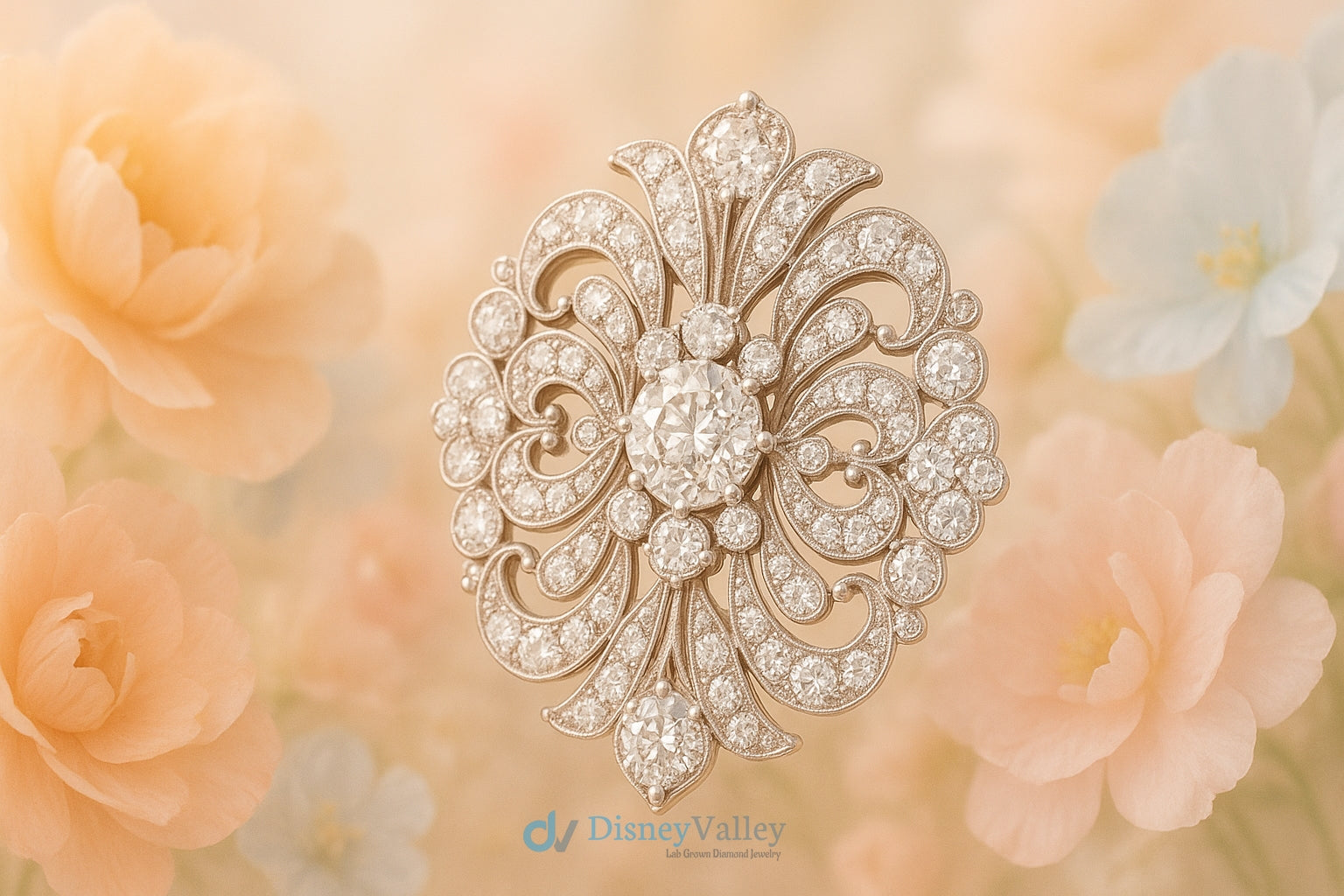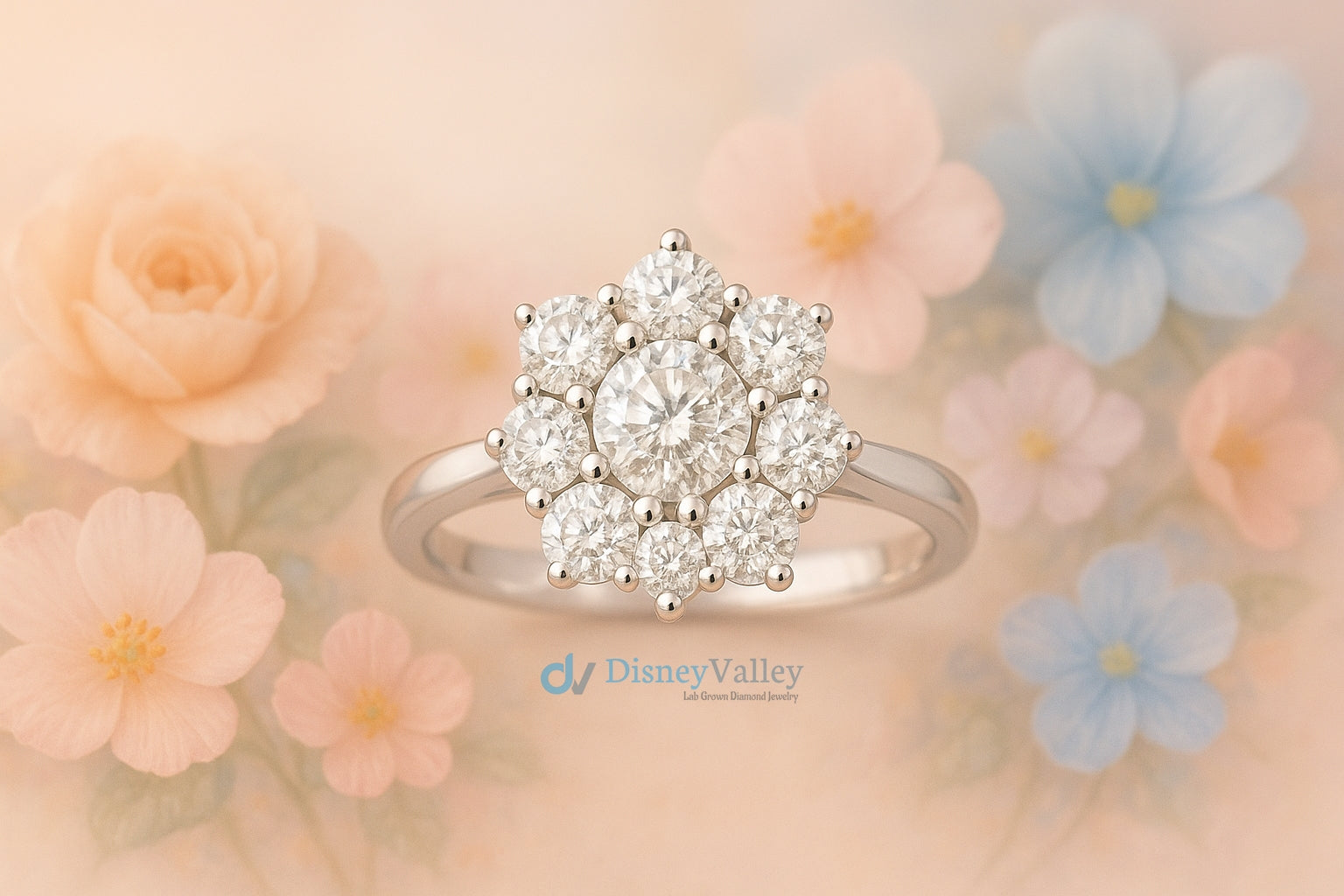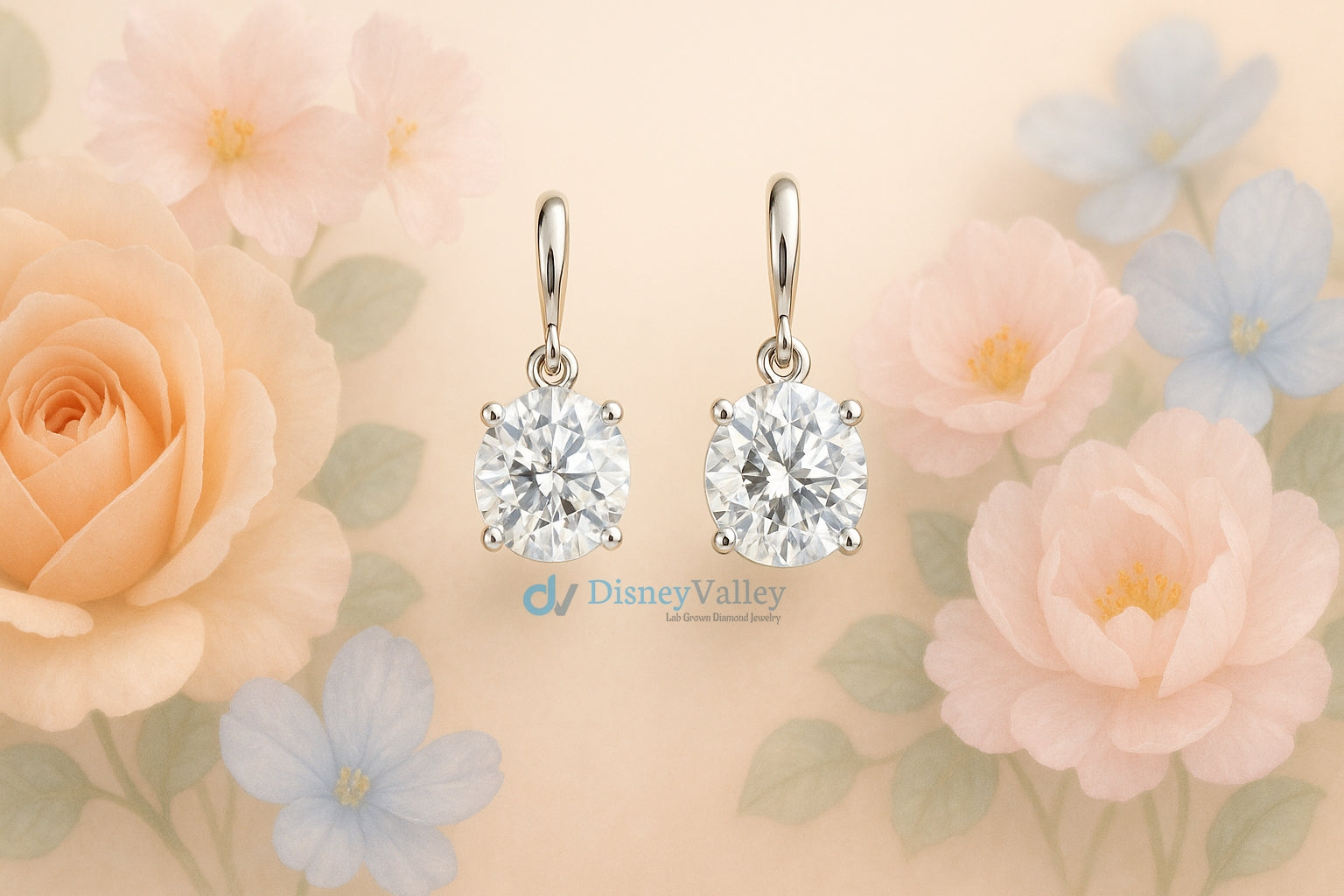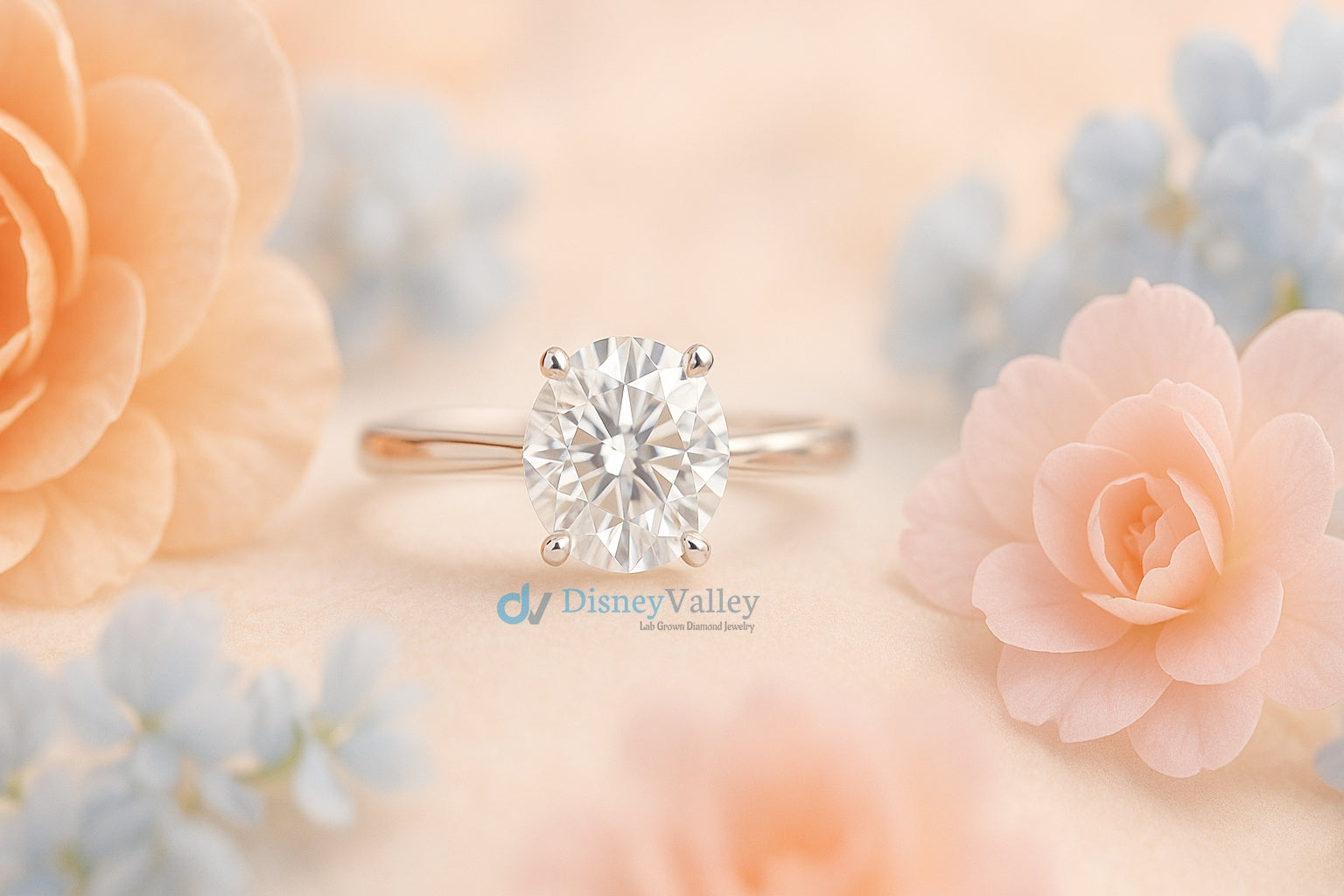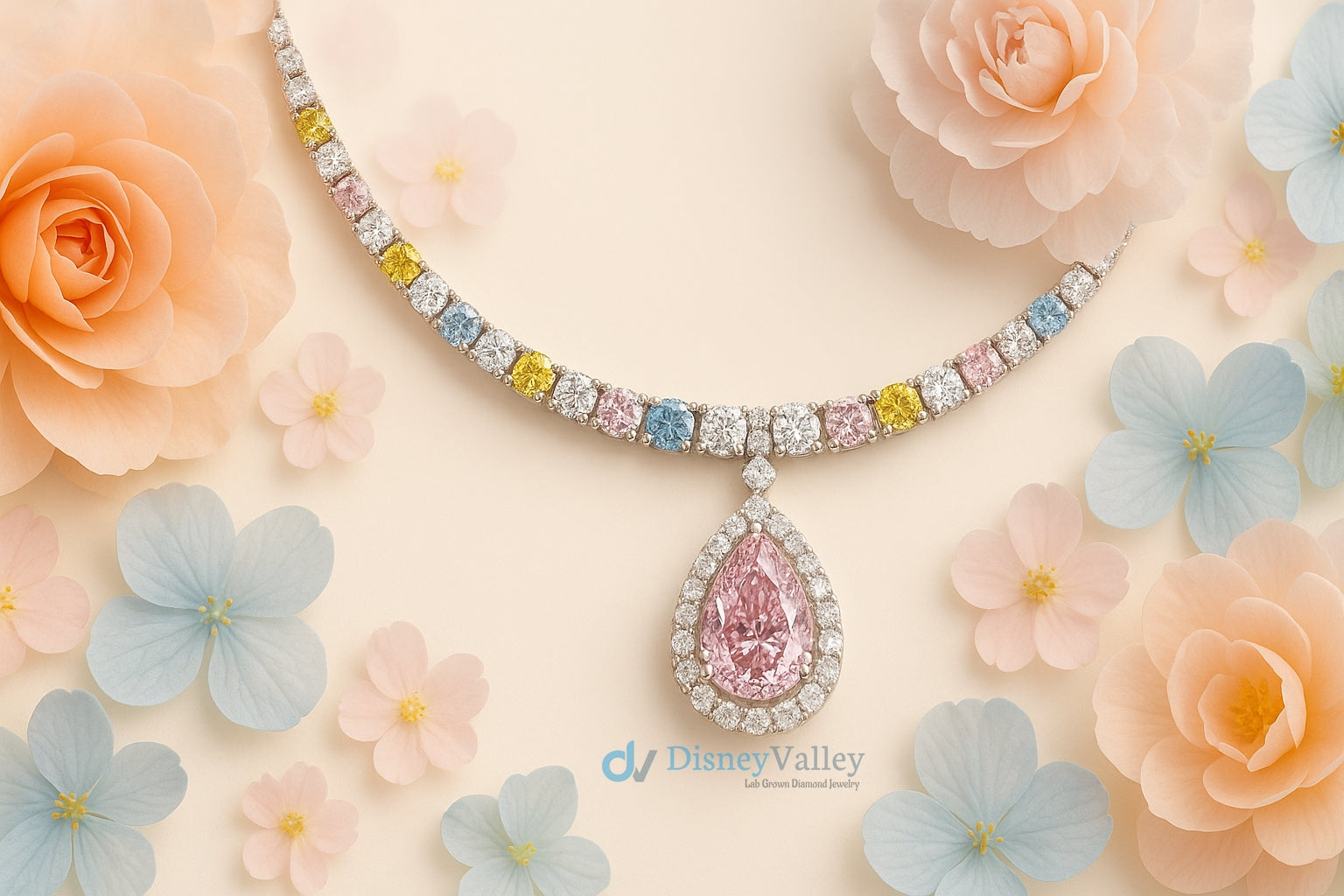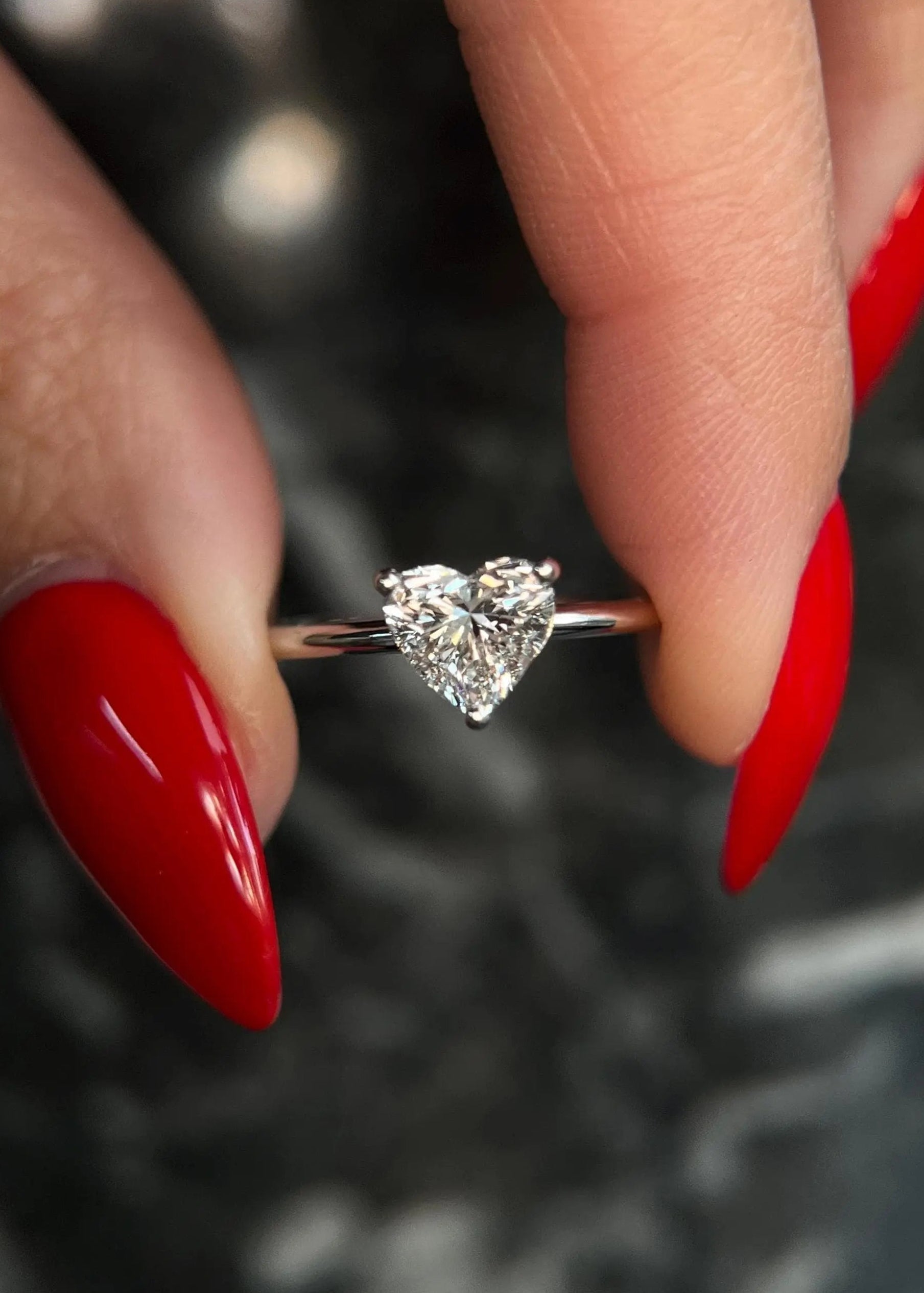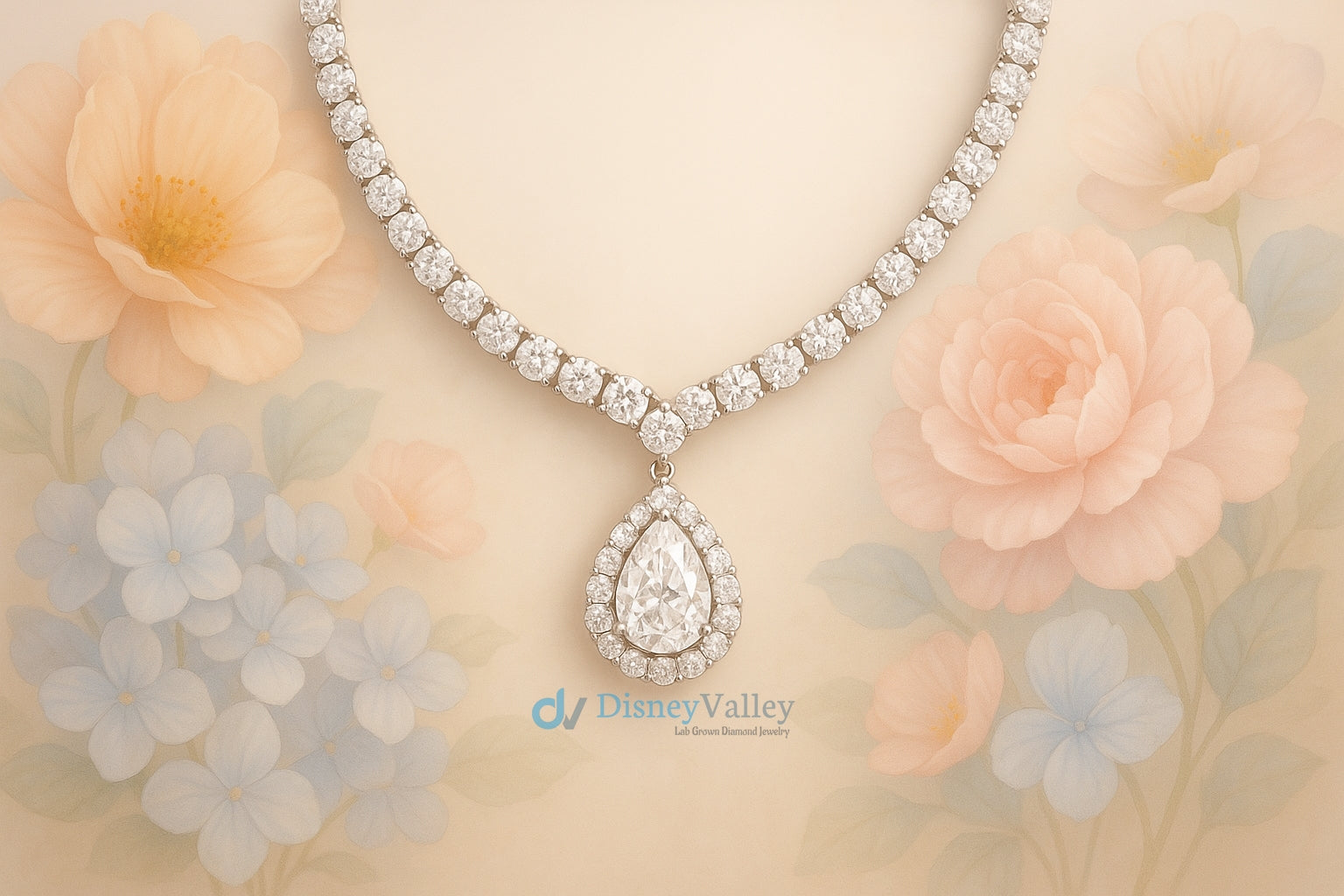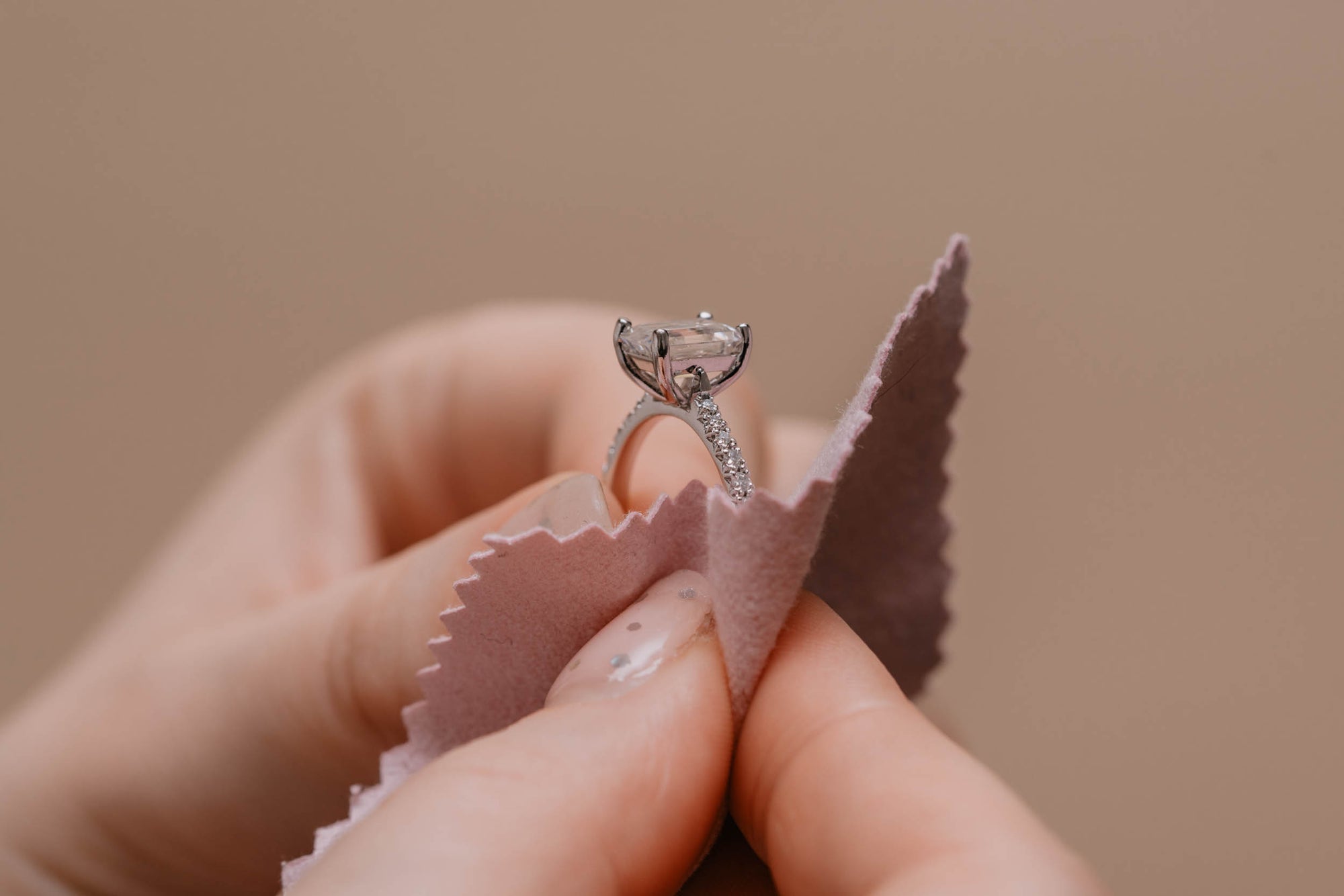
Check For Loose Stones
Though regular wear, claws can be knocked and this may cause them to move and release tension from the stone, causing the stone to move in its setting. Lightly tap the stone whilst holding it to your ear to make sure there's no movement. If there is, don't stress,
Avoid Harsh Chemicals
Avoid contact with any harsh chemicals such as cleaning products and beauty products such as creams. Harsh chemicals can cause damage to your jewelry and cream can clog up the setting, causing the stones to look lifeless.
Store Separately & Safely
Store in your Disney Valley Diamond jewelry box when not wearing to avoid potential damage. If you have a ring, make sure you remove it by the band, not pulling at the setting, as this part of the ring is more fragile.
Remove In Water
We recommend removing your jewelry where possible when cleaning using swimming facilities or going in the sea. Get in the habit of removing your jewelry during any water-based activity and your jewelry will thank you for it!
Intentional design
Whether you’re heading out on a mountain bike ride, a spot of gardening or using the gym - our advice is simple. Take off your ring! You’ll be glad that you do.
Insure Your Jewelry
Regular house insurance policies usually offer cover on valuable items, but they often need to be added separately, so be sure to read your terms. Alternatively,
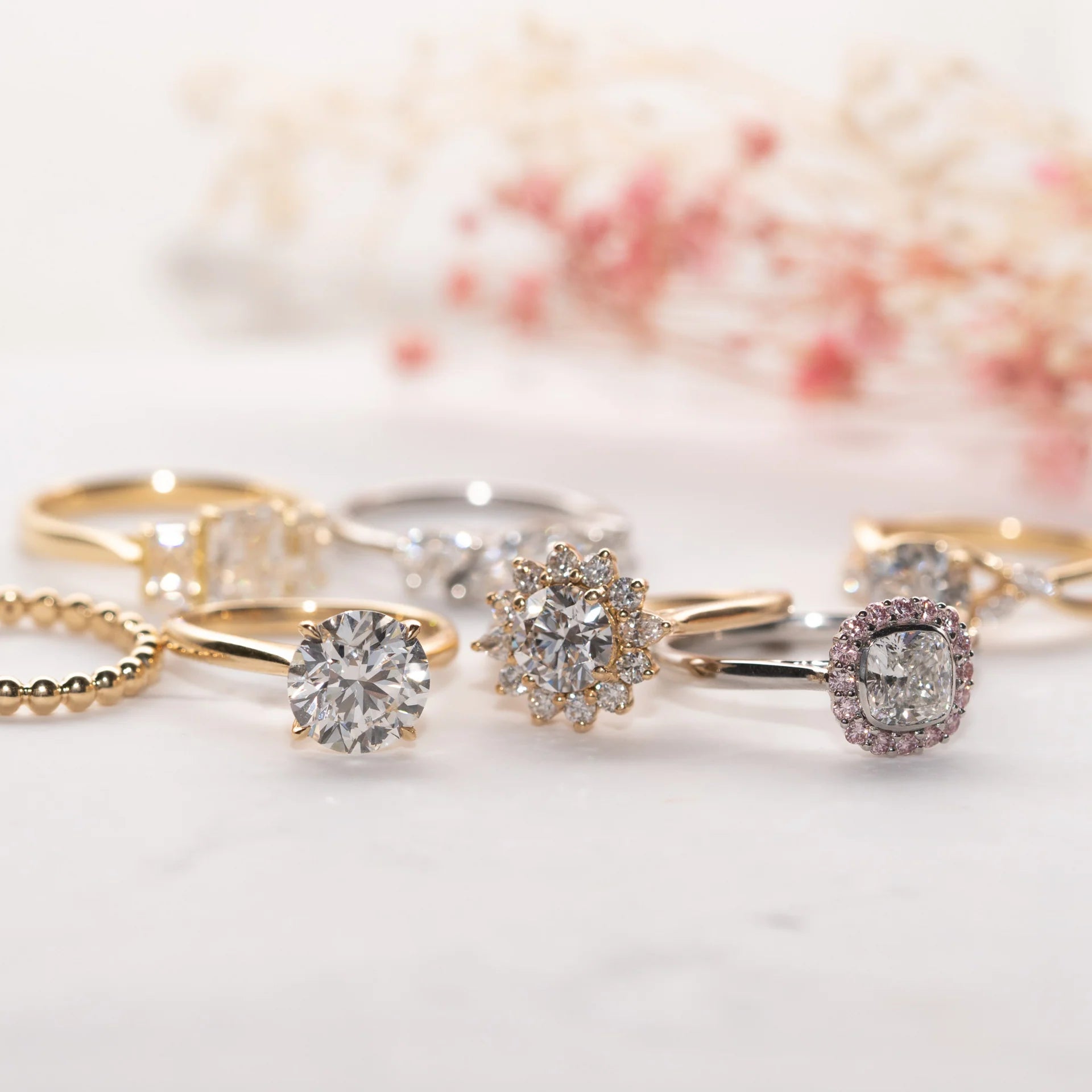
- Wear rings of a the same karat (gold) together, e.g. your wedding and engagement ring, to avoid one wearing the other down over time.
- 18k gold is a perfect alloy which balances lustre with durability for everyday wear. However, it is still softer than platinum and care should be taken not to scratch or knock it.
- Gold should be cleaned regularly in order to maintain its beauty. Gold does not like chlorine or bleach so be aware of this when in a swimming pool or hot tub.
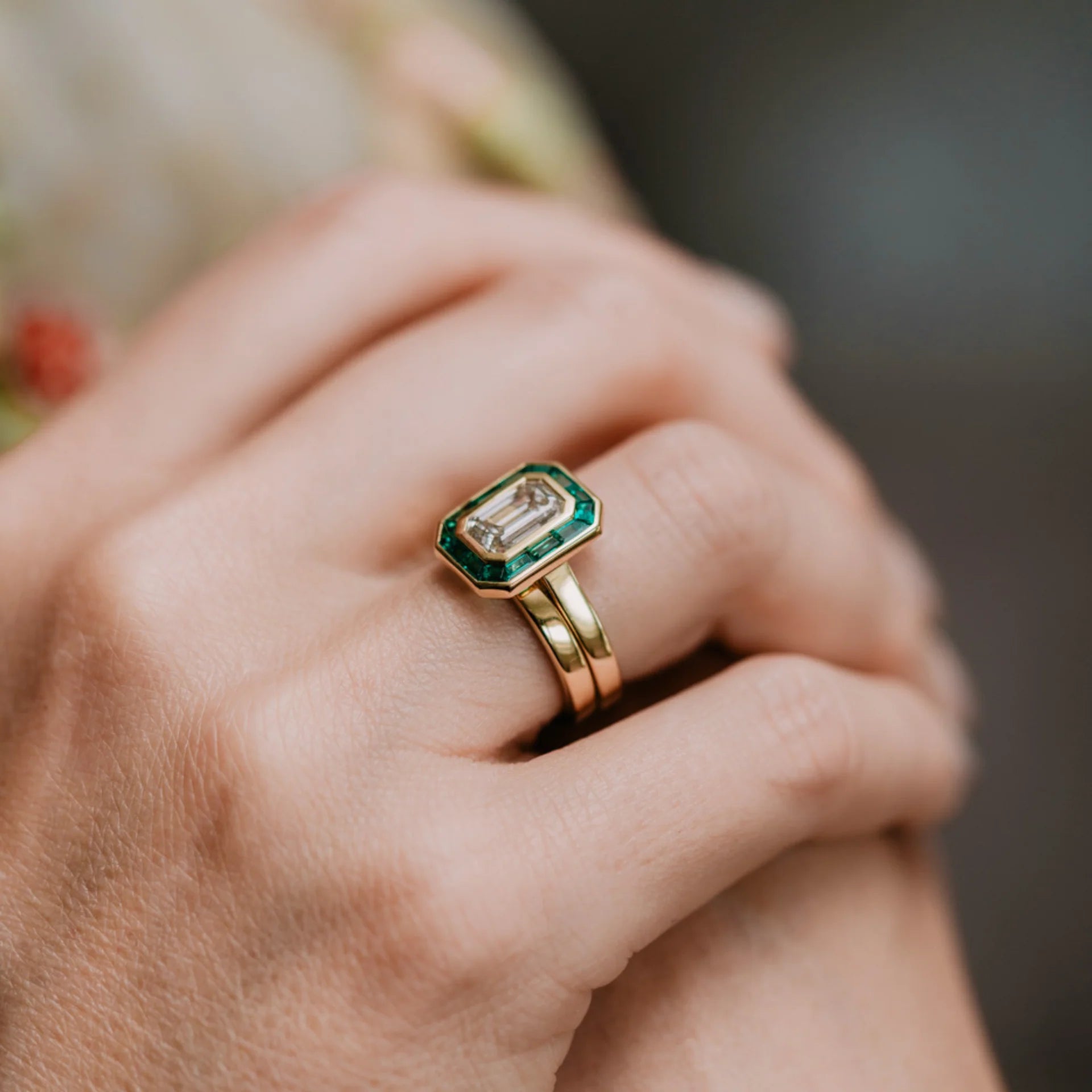
- Gemstones such as Sapphires and Rubies are very durable and can be worn and cared for with ease. Softer gemstones such as Morganite, Emerald and Aquamarine require a little more care – they can be worn and enjoyed daily, with a little extra attention. When considering a gemstone for your fine jewellery, we recommend a Mohs rating of 7 or more.*
- We advise that you don’t wear two diamond rings together on the same finger as diamonds are susceptible to scratching each other.
* The Mohs scale of mineral hardness ranges from 1-10 and measures a mineral’s resistance to scratching. Diamond is the hardest mineral with a rating of 10, and sapphires are 9, making both of these minerals ideal for everyday wear.
Fill a dish with fairly hot (not boiling) soapy water (a little dish washing liquid is good for home cleaning) – it is important to clean your jewelry away from the sink.
After soaking your ring in water for a few minutes, use a soft baby’s tooth brush to clean it – paying attention to all the stones and the setting.
Once done, rinse in clean warm water, under a running tap and simply pat dry with a lint free cloth.
Oxidation is the blackening of silver by dipping it in a chemical solution of Liver of Sulfur. It is a semi-permanent treatment that lightens over time with wear. A coating of food-grade wax has been applied to the prolong the color but precautions should still be taken.
To protect the surface color, avoid contact with lotions, perfumes etc. Remove rings when washing hands and do not wear your jewelry in the shower or to sleep.
If you have purchased an oxidized piece from Andrea Shelley,
Sterling silver is an alloy of silver containing 92.5% by weight of silver and 7.5% by weight metals, usually copper.That is why you might commonly hear it called 925 silver.
Sterling silver is a great metal for jewelry. It is long wearing and easy to clean. While contact with the air will cause the surface of your silver to darken (called tarnish),
it is easily cleaned up with a soft polishing cloth, or using this hands-off method.
The best way to prevent tarnish on your sterling pieces is actually to wear them. The friction against your skin will rub off tarnish as it forms. You can wear your sterling in the shower or to bed, but still remove it during activities where it will have contact with chemicals such as swimming or cleaning.
If you're ever found a forgotten piece of silver jewelry in the bottom of your jewelry box - dark, dingy and no longer the least bit shiny - then you're no
stranger to tarnish.
What is tarnish?
It's a chemical reaction between silver and the sulfur in the air. Given enough time, it is pretty unavoidable unless you vacuum seal your jewelry between wears (and really, does that?).
So what can you do for clean your jewelry?
5 Easy Steps
- Take a bowl and put a tinfoil paper into it.
- Have some warm water and add 2 tbsp baking soda into it.
- Put your tarnished silver jewelry into that mixture and wait for 2-3 hours.
- Take a Jewelry from bowl.
- Clean jewelry with soft cotton cloth.
if you or your loved one wears jewelry regularly (such as an engagement ring), it’s a good idea to have it professionally maintained to check the stones are secure, to polish scratches and scuffs out of the metal, and deep clean any small diamonds to restore the shine and brilliance.
It is strongly advisable to remove your engagement ring and wedding band when doing chores around the house, during exercise or other outdoor activity. It is a common misconception that you can wear your rings all the time and they will last forever, but this is simply not true. If you rarely or never take them off, it exposes them to a lot of wear and tear, putting them at high risk of needing regular repairs over time. Fine jewelry like delicate engagement rings set with lots of small stones in a halo or on the shoulders and diamond set wedding bands, should be removed , cleaned and checked regularly.
The purity of gold is measured in karats; 24k is pure gold and any carat below this is gold mixed with other alloys.
24k gold is very soft so jewelers usually use 18k or 9k gold as the mixed alloys make the metal much stronger for setting stones, adding design details and make them suitable for wearing.
18ct gold is made with 750 parts of gold and 350 parts of alloy or other metals. 9k gold is made with 375 parts of gold and 625 parts of alloy or other metals which makes it the most durable gold jewelry, suitable for daily wear and most resistant to scratching.
By mixing different color alloys with the gold, you can achieve different color gold which is how we create white gold and rose gold. By definition, it isn’t possible to find 24k white or rose gold as it isn't naturally formed.
Because of its purity, platinum jewelry is hypoallergenic, therefore ideal for sensitive skin.
All precious metals can scratch, and platinum is no exception. However, the scratch on platinum is merely a displacement of the metal and none of its volume is lost. Over time platinum develops a natural patina, which many people find just as attractive as a polished finish.
Diamond is the hardest mineral we know of, but that doesn't make diamonds, lab or natural, unsusceptible to damage. Although they may be harder to damage, they can still be scratched or chipped, similar to semi precious gemstones. Make sure you take care when wearing and storing your jewellery and avoiding doing strenuous activities whilst wearing your precious pieces.
